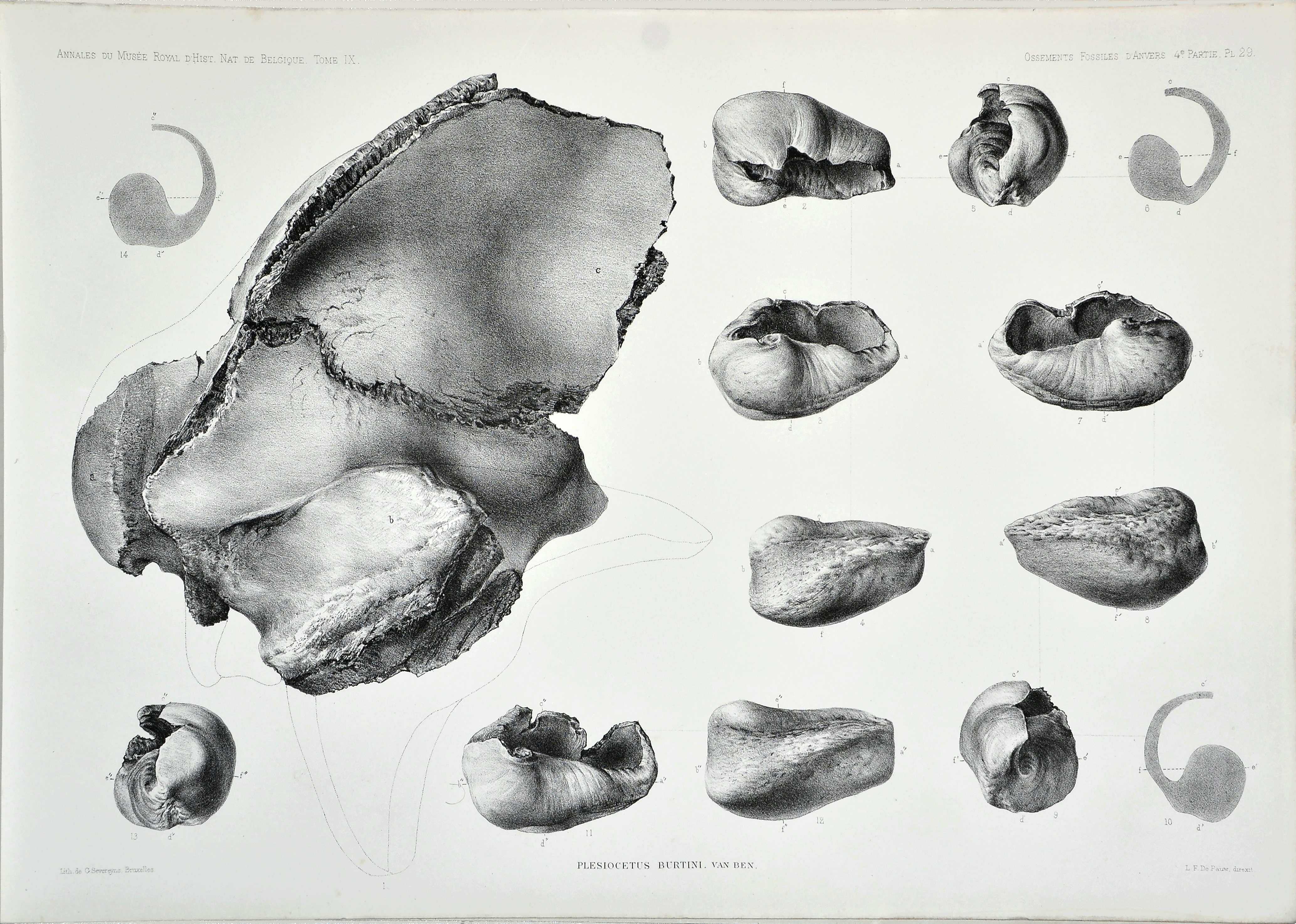ON PLESIOCETUS VAN BENEDEN, 1859 (MAMMALIA, CETACEA, MYSTICETI)
DOI:
https://doi.org/10.13130/2039-4942/15745Keywords:
Antwerp; Belgium; Cetacea; Miocene; Mysticeti; Phylogeny; Plesiocetus; Pliocene; Taxonomic revision.Abstract
A new analysis of the “type” Plesiocetus collection established by Van Beneden in the 19th century is performed to provide an updated taxonomy of this genus. Plesiocetus was established based on isolated finds that were assembled together to reconstruct almost complete skeletons of four species: P. brialmontii, P. dubius, P. hupschii, and P. burtinii. Plesiocetus has then been used by different authors in taxonomic studies of mysticete faunas and became a taxonomic wastebasked that is now in critical need of revision. Unfortunately, the diagnosis of Plesiocetus provided by Van Beneden does not allow to distinguish it from other mysticete taxa. For this reason, the analysis of all the specimens that Van Beneden assigned to Plesiocetus was necessary to understand the characters of the genus. The revision was done through a comparative anatomical analysis of all the specimens. The results of this work revealed that, among the specimens used by Van Beneden to set Plesiocetus, there is a variety of individuals that must be assigned to different genera in several families. Specimens were assigned to Cetotheriidae, basal thalassotherians, Balaenoidea, Balaenidae, Balaenopteroidea and Balaenopteridae. All the specimens are assigned to gen. et sp. indet. because of their lack of taxonomically-informative characters. The conclusion of this study is that Plesiocetus is a nomen dubium and must be abandoned by mysticete taxonomists. This result has important taxonomic implications for a number of specimens previously assigned to Plesiocetus. We reviewed all these specimens and provided new taxonomic interpretations.
Metrics

Downloads
Published
Issue
Section
License

This work is licensed under a Creative Commons Attribution-NonCommercial-NoDerivatives 4.0 International License.
The journal allow the author(s) to hold the copyright without restrictions.






